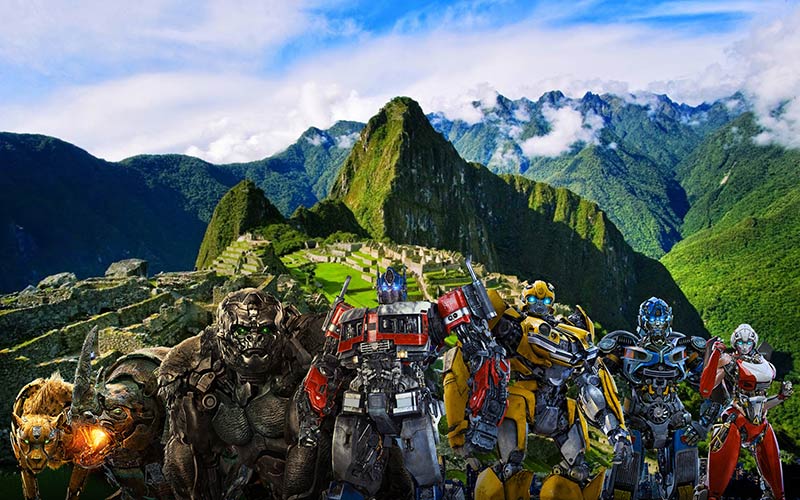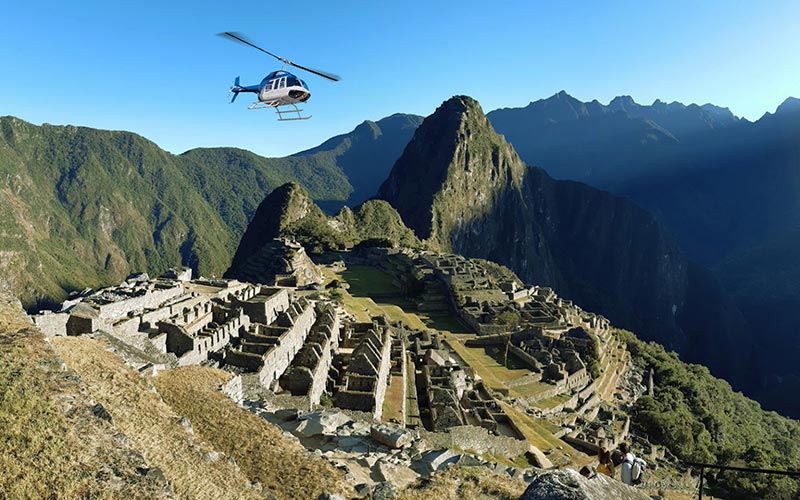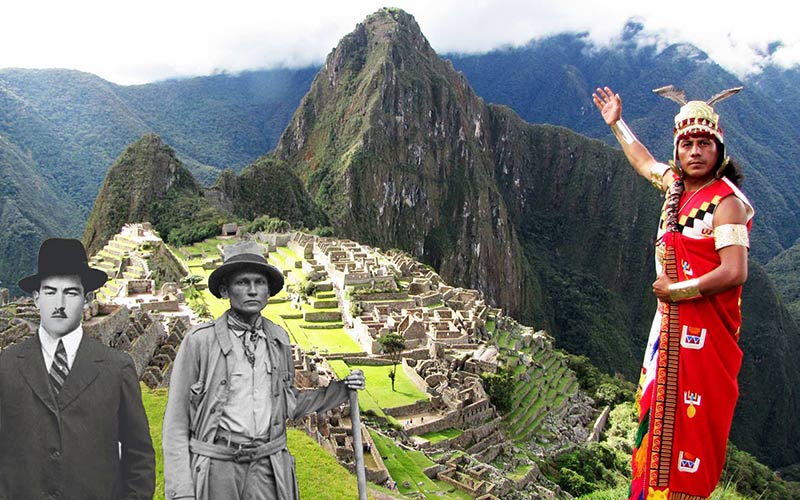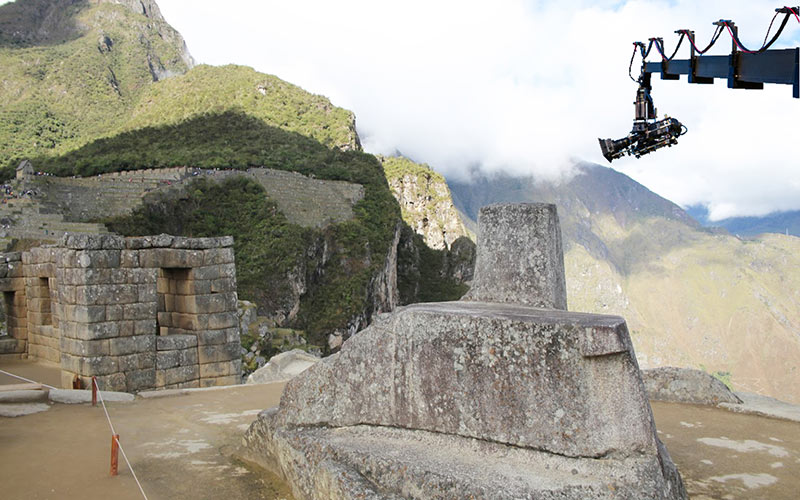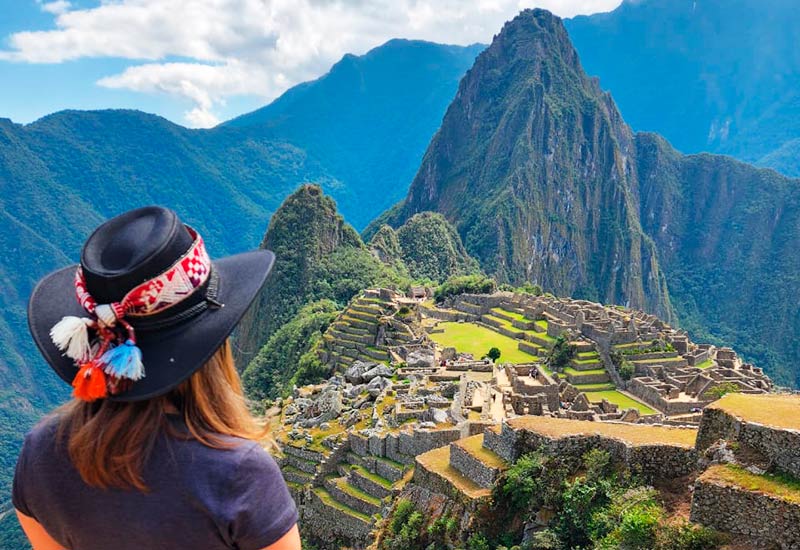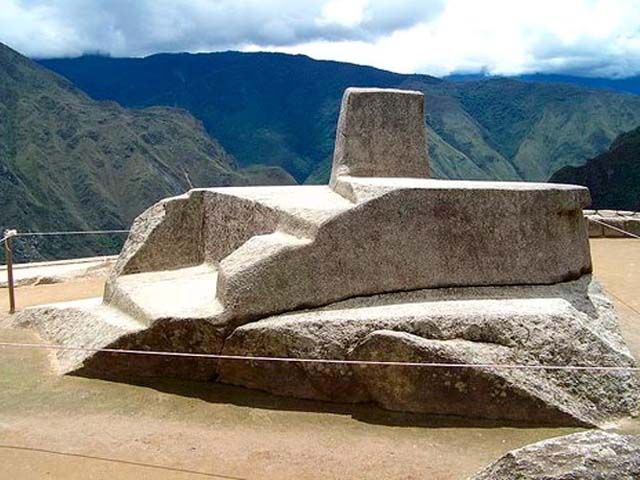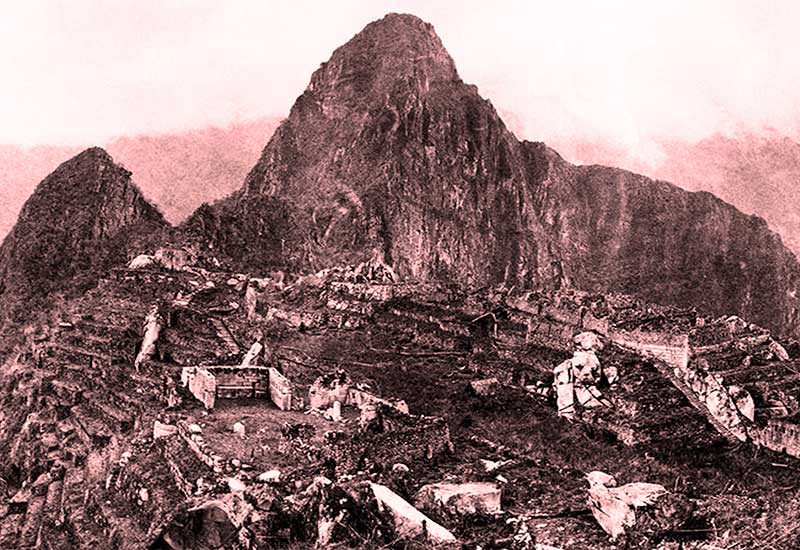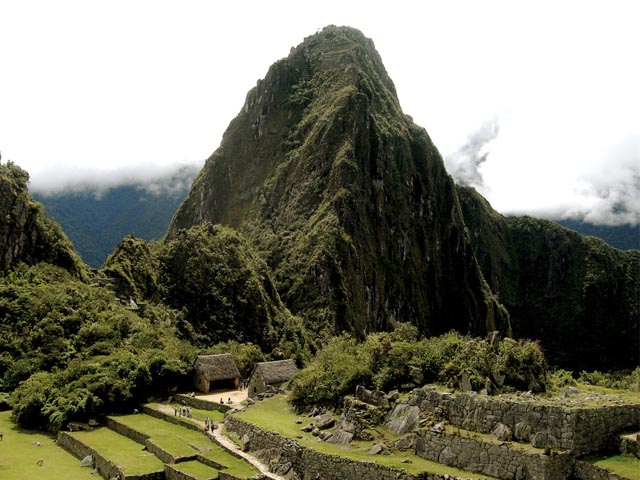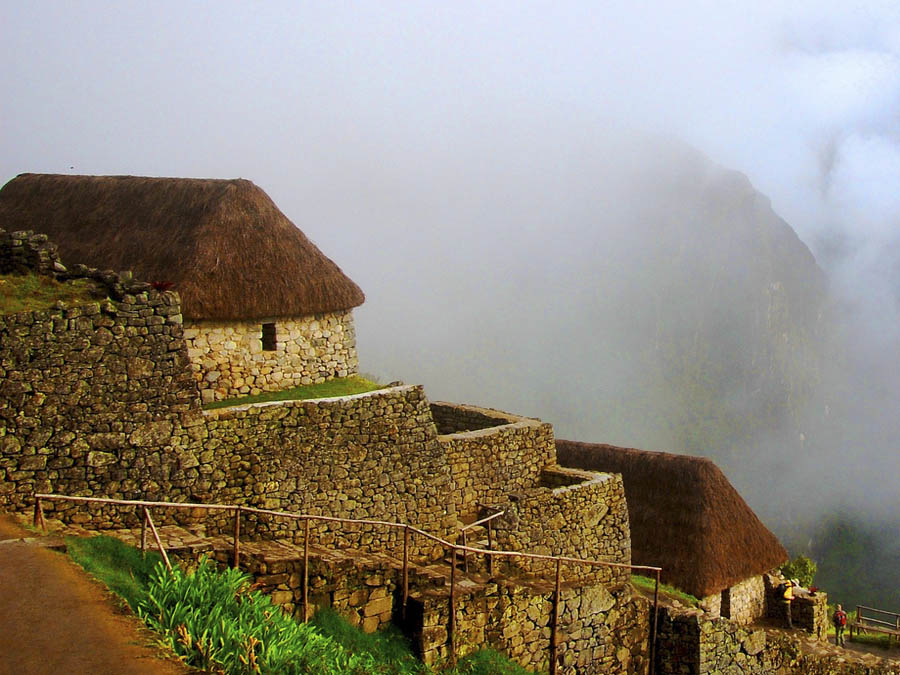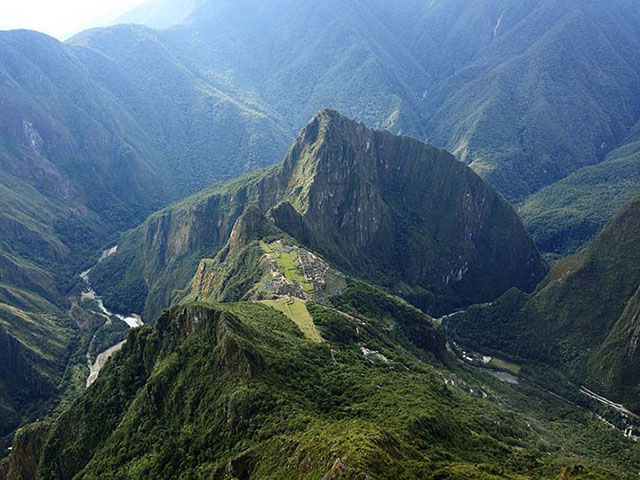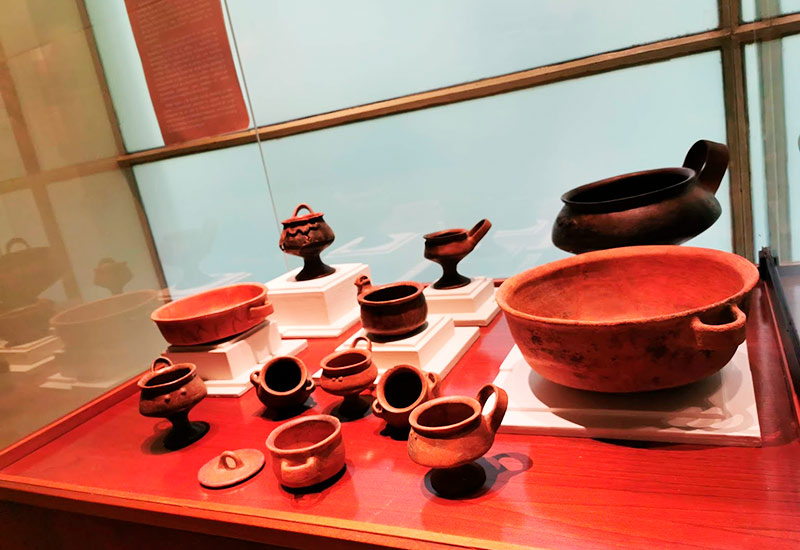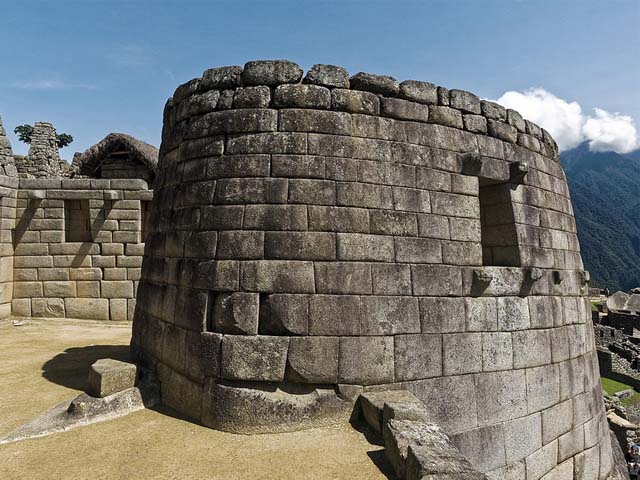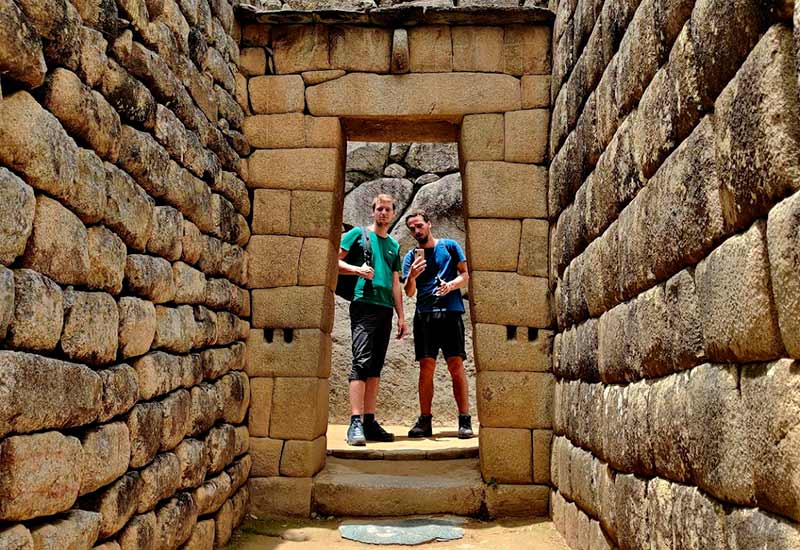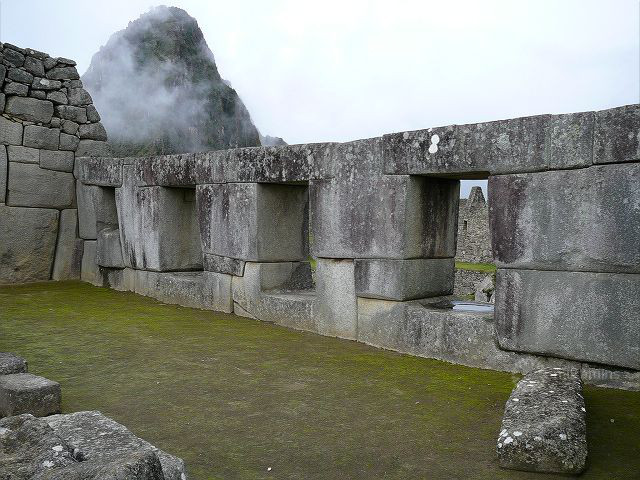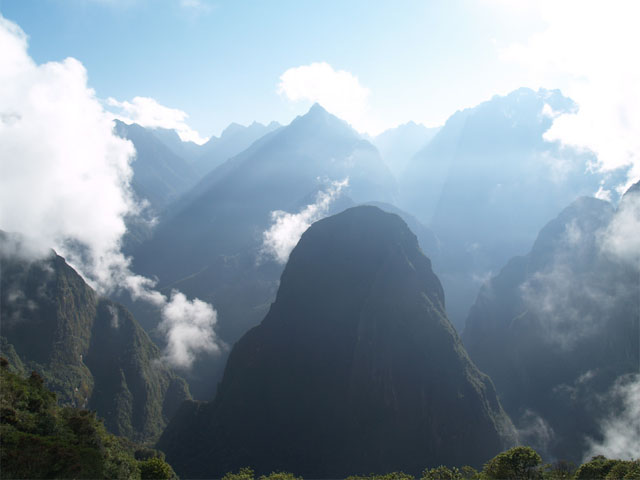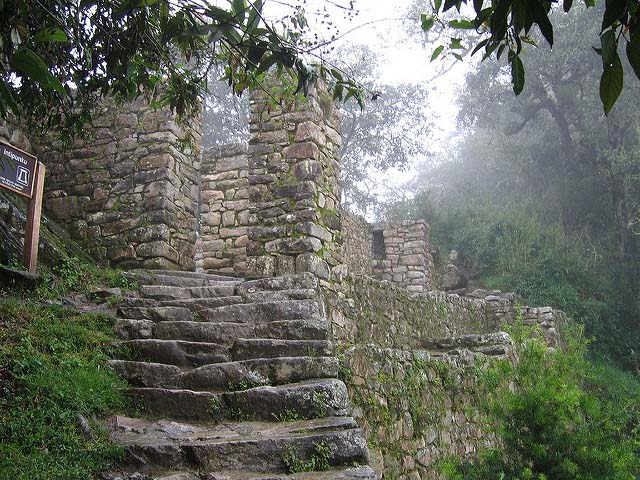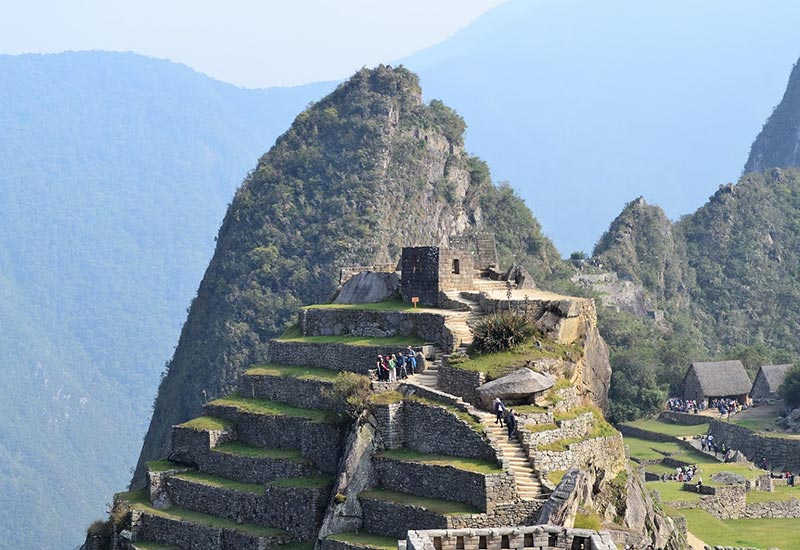Curious stories about Machu Picchu
Machu Picchu is located at more than 2,430 meters above sea level. It is located between the mountains of the Andes Mountains and the high Amazon jungle. It is one of the most visited destinations in South America and one of the most important on the planet. It was built around 1450 A.D., as a lookout post, citadel, and royal palace for Emperor Pachacutec. In 1983 it was declared a World Heritage Site by Unesco. In 2007 it was chosen as one of the new 7 Wonders of the Modern World.
- Helicopters in Machu Picchu?
- Does Machu Picchu have an owner?
- The message system in Machu Picchu?
- Human sacrifices in Machu Picchu?
- Did Hiram Bingham discover Machu Picchu?
- A crane in Machu Picchu?
- A site museum in Machu Picchu?
- Machu Picchu at the movies?
- Nude in Machu Picchu?
- Machu Picchu or Patallaqta?
- Photo gallery
Machu Picchu is one of the most visited tourist attractions on the planet. It is estimated that every year 1.5 million tourists arrive there. This number of visitors generated a great diversity of curious stories that amaze everyone. Anecdotes that date from the Inca times themselves and that continue to be written until today. It is that the Inca citadel is an inexhaustible source of stories. Learn more about one of the most important stories of humanity!
Helicopters in Machu Picchu?
- According to the researcher Manuel Chávez Ballón (archaeologist who was a resident of Machu Picchu for many years); In 1978, by order of the Peruvian Government, the monolith located in the center of the Main Plaza of the Inca city of Machu Picchu was removed.
- The reason was to allow the landing of a helicopter that brought the King and Queen of Spain, Carlos and Sofía.
- Another case occurred in 1989, during the presidency of Alan García. Said rock was removed once again to be able to receive helicopters, during a meeting of Latin American leaders.
- In this process, the workers accidentally broke the rock, causing irreversible damage. Then making the decision to bury her.
Does Machu Picchu have an owner?
- Roxana and Victoria Abril claim to be the true owners of Machu Picchu. They point out that they should not pay an entrance fee to enter their land.
- According to them, their great-grandfather Mariano Ignacio Ferro bought the land legally, before it was rediscovered by Hiram Bingham in 1911.
- Since 2013, the Abril sisters have been suing the Peruvian State, demanding to be compensated, for the sum of 100 million dollars, and a percentage of the future benefits generated by the Inca citadel.
The message system in Machu Picchu?
- During the Inca era, young men in good physical condition carried out the work of relay messengers; known as ‘the chasquis’.
- They had the function of carrying messages and merchandise quickly, through the more than 40 thousand kilometers of Inca roads (qhapac ñan).
- The chasqui had to go at maximum speed in a short journey, and then be relieved by another. This fast postal service meant that they could communicate quickly from Machu Picchu in Cusco (capital of the empire) to all of Tahuantinsuyo.
- A parcel from the city of Cusco to the city of Quito could be delivered in six days.
- Thanks to this, fresh fish could be had from the coastal region of Chala (near Arequipa) to the Inca citadel of Machu Picchu in just 24 hours.
Human sacrifices in Machu Picchu?
- In the Inca civilization the ‘Capacocha’ was practiced, a ritual in which boys and girls were sacrificed out of ‘royal’ obligation.
- For the Incas death was the beginning of another life. Those chosen for sacrifice were boys and girls because they were considered pure beings. These generally belonged to powerful families from regions far from Tahuantinsuyo.
- The historian Carmen Martín points out that children of great beauty from all over the empire were chosen. These used to be between 6 and 8 years old, although they could also be older.
- It is known that, after a long pilgrimage, death came painlessly to children because they were drugged with coca leaves and chicha. In addition, when they fell deeply asleep, they were exposed to very low temperatures on the tops of glacial mountains, so their bodies were preserved in good condition.
- In these celebrations called ‘capacocha’, animals were also sacrificed, and symbolic marriages were carried out to strengthen relations with the rulers of the conquered peoples.
- The population of Machu Picchu, for being part of the vast Tahuantinsuyo empire, was no stranger to this practice.
Did Hiram Bingham discover Machu Picchu?
- The American explorer Hiram Bingham is considered the official discoverer of Machu Picchu, since in 1911 he made the scientific and historical importance of the Inca citadel known to the world.
- However, there is evidence of several foreign and Peruvian explorers who would have arrived many years earlier.
- For example, in 1874 the German explorer Herman Göhring recorded the Inca citadel on his exploration map.
- In 1901, the landowner from Cusco, Agustín Lizárraga, engraved his name on one of the walls of the Temple of the 3 Windows, a fact recorded by Hiram Bingham himself in his photographic samples (but later omitted from his memoirs).
- In reality, Machu Picchu was not a ‘lost city’ but rather remained silent due to the ignorance of its historical importance by the locals.
A crane in Machu Picchu?
- On September 8, 2000, during the recording of an advertisement for ‘Cerveza Cusqueña’, the upper southern corner of the Intihuatana (Machu Picchu’s sundial) suffered irreparable damage.
- During the recording of the publicity, a crane fell on a corner of the stone construction. Because of the accident, the Peruvian Government and an employee of the Ministry of Culture of Peru were blamed.
- The damage to the Intihuatana was irreparable. The Inca construction can still be visited by people. However, recordings of various kinds with heavy recording equipment are no longer allowed. Of course recordings with cranes inside Machu Picchu are not allowed.
A site museum in Machu Picchu?
- In the middle of the road that connects the town of Aguas Calientes with Machu Picchu (Hiram Bingham road) is the Machu Picchu Site Museum called ‘Manuel Chávez Ballón’ in homage to the Peruvian archaeologist who dedicated many years to research in the Inca citadel.
- In the 1960s and 1970s, at the initiative of Dr. Manuel Chávez Ballón (then a construction resident), he proposed the construction of a site museum. This is also thanks to the donation of Mrs. Anita Fernandini de Naranjo.
- Manuel Chávez Ballón was born in the city of Puno on June 2, 1919. He studied at the San Agustín de Arequipa University, and later at the San Marcos University in Lima. He obtained a specialization doctorate as a teacher in History and Geography, before receiving the position of resident archaeologist of the Sanctuary of Machu Picchu (1966-71).
- A few years later he would open the “Inka Workshop”, where he would teach Peruvian history. He died in his workshop on June 12, 2000. Today the Machu Picchu Site Museum bears his name.
Machu Picchu at the movies?
- Machu Picchu has appeared in popular culture, especially in movies and documentaries, since the 1950s.
- In 1954 Paramount Pictures filmed “The Secret of the Incas” in different locations in Cusco and Machu Picchu, it was the first time that a Hollywood studio filmed within the Inca city.
- In 1972, Machu Picchu appears again in the cinema. This time in a movie called Aguirre the Wrath of God, with scenes filmed from the Huayna Picchu mountain.
- In 2004, Diarios de motocicleta was produced, which narrates the youthful trips of the young Ernesto Che Guevara, in which scenes from Machu Picchu also appear.
- There are many fascinating documentaries created by specialized channels, such as the Discovery Channel, National Geographic, History Channel and NOTV, all produced in Machu Picchu.
Nude in Machu Picchu?
- Cases of naked people have been recorded in the archaeological site of Machu Picchu.
- In early 2014, an 18-year-old Australian and a 30-year-old New Zealander crossed the Main Plaza of Machu Picchu completely naked. It was later reported on the news that they tried to bribe park officials to avoid being turned over to the police.
- Just a while later, two Canadians were arrested for taking nude photos. Whatever your culture, remember that it is forbidden to undress in Machu Picchu.
- Today it is totally forbidden to undress in Machu Picchu. In case the tourist is caught without clothes, he will be removed from the Inca city and criminally denounced with the impossibility of revisiting the archaeological site.
Machu Picchu or Patallaqta?
- In the indigenous Quechua language, ‘Machu Picchu’ means ‘Old Mountain’.
- However, this would not be the real name of the Inca citadel. The real name of Machu Picchu would be ‘Patallaqta’, which translated from the Quechua language means ‘Town on a step’ or ‘high town’. This according to a study by the Spanish historian María del Carmen Martin Rubio based on the chronicles of Juan de Betanzos in 1551.
- Machu Picchu is made up of more than 150 buildings ranging from baths and houses to sanctuaries and temples.
- Although many of the stones used to build Machu Picchu weighed several tons, wheels are not known to be used to transport them. Apparently hundreds of men would have climbed the rocks, up the steep side of the mountain.
- The Inca civilization had some of the best builders in the world, the structures built with a technique called ashlar (stones fitted without mortar), with cracks in which a razor blade does not fit.
- Machu Picchu was also an astronomical observatory, with a sundial (Intihuatana) that accurately indicates the winter and summer solstices.
- Unfortunately, the Spanish invasion ended with a large part of the Inca cities; and it is presumed that the inaccessible location of Machu Picchu prevented it from being found and destroyed.
Advice from people who have been there
 By: Catalina V.
By: Catalina V.“It never ceases to amaze me“
“It is the second time that I visit Machu Picchu and the truth is that each time I am more surprised. There is so much to discover that I would return a third time without hesitation. I recommend going with an all-inclusive tour, with tickets, guide and everything. This is how they secure their tickets since there is little availability. 100% recommended.“
By Ticket Machu Picchu – Last updated, August 15, 2024
